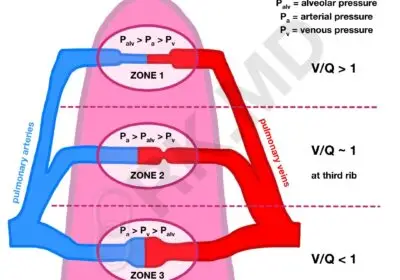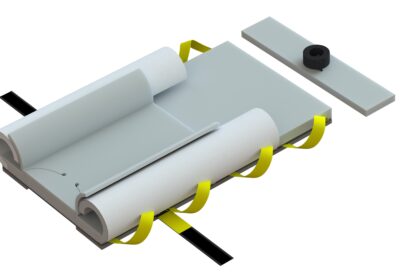Clinical Value Analysis Beyond Asking: “Are You on Contract?”

Our customers have come to realize that the key to success lies in prioritizing patient outcomes and the safety of both patients and surgical staff. Instead of solely relying on pre-negotiated prices and vendor relationships, they have embraced new standards and processes of care through innovative surgical positioning platforms like ours. This has not only improved the quality of care provided but also enhanced the safety of healthcare providers and patients. Sadly, there are so many other innovative companies out there just like us, stuck in a purgatory of corruption, conflict of interests, ineptness, and anti-competitive roadblocks.
Their tireless effort of our customers to overcome the hurdles of introducing new innovations serve as a reminder that it is not a sweeping condemnation of the entire industry, but rather a call to attention for the actions of a few that undermine the diligent work of many. Unfortunately, this issue has become so widespread that most are unaware of their involvement in this detrimental ecosystem.
Throughout my extensive experience in healthcare spanning 25 years, I have witnessed the transformation where the prevailing restrictions imposed on healthcare providers prioritize cost-cutting measures rather than their obligation and capacity to enhance patient care.
Unfortunately, the current system of commoditization and bundled vendor contracts fails to consider the true cost benefit analysis and the importance of clinical value analysis, highly reliable processes, and safety for providers and patients. This approach limits our ability to accurately determine the actual cost and return on investment during surgical procedures, especially under bundled care reimbursements (BPCIs). The focus should be on overall improvement in outcomes and safety rather than solely on perceived line item cost. The irony is that the focus on upfront cost overshadows the losses of revenue capture during surgical block times, especially those related to care events and processes. These metrics can be measured in the patient’s electronic health record, which is almost never analyzed during current value analysis processes.
There are consequences to relying on commoditization and line item cost analysis, especially when clinical decisions are made by those with limited experience or no clinical expertise at all in the products they manage.
This not only dictates the care and practice of medicine but also puts staff and patient safety at risk, with very little if any accountability. We must begin to hold those responsible who prioritize upfront cost over performance, outcomes, safety, and high reliability, as they are jeopardizing the well-being of both providers and patients. This is not the industry for silos. It takes a village. Communication is needed to close these gaps in decision making, so is respect and the ability to understand each stake holder’s duties.
Under evolving bundled payment programs (BPCIs), healthcare professionals and facilities are paid the same regardless of the time it takes to perform a surgical procedure. Focusing on perceived and commoditized upfront costs disregards the importance of performance and high reliability when seeking to capturing block time ROI. We must consider the true return on investment per surgical procedure, especially when it comes to performance. We routinely see facilities so focused on $5-30 dollars in upfront cost savings when initially comparing our products to our commodity competitors, only to lose $50 to $1000 dollars in block time capture due to their surgical positioning processes, again something you can capture in the EHR between anesthesia induction/hand-off and incision. We can even track these times based on BMI, procedure type, and utilization of staff. There is no such thing as a “SOFT COST.”
As an anesthesia caregiver and a medical device company owner, I have witnessed true value analysis taking place in our accounts.
The unwavering commitment clinicians display in overcoming obstacles to introduce groundbreaking innovations restores my belief in an industry that sometimes prioritizes profit over its responsibility towards patients. Their staff grew tired of using inferior products contracted through GPOs and decided to fight against this cronyism. They understood that their mutual safety, as well as that of their patients, was at stake.
It is disheartening that innovative Veteran-owned companies like ours are have not been allowed to participate in GPO contracting. Instead, non-innovative vendors are given preference, often attempting to copy our products and utility. Jumping ahead of the line for an entire product utility and market we invented almost ten years ago. However, we will not back down. We will continue to fight for innovation and access to markets.
It is a shame that this industry operates under the misguided definition of “value” and “evidence-based” practices, driven by corrupt vendor relationships and conflicts of interests that serves to marginalize innovative threats. In fact, some GPOs offer their vendors “Protection from competitive threats and rebidding”. We literally have one of their PowerPoints stating this benefit. This mentality resembles that of the Mafia. It is as if the Mafia should have legitimized some of their practices to obtain “Congressional Safe Harbors” and operate legally in the same manner. If only the bosses thought about healthcare! They might have left some of their other sordid activities behind, given the fact healthcare is almost 19% of our annual GDP.
By breaking free from the constraints of contracted products, our customers have embraced the value and safety we offer.
This has allowed them to prioritize patient safety and outcomes, resulting in a significant improvement in the quality of care provided, while optimizing block times and surgical efficacy. In fact, when given the chance to trial against our competitors, we have about a 100% conversion rate, regardless of the cost of seemingly competitive products.
It is crucial for healthcare professionals to challenge the myth that they are limited to GPO contracts and instead focus on innovation and the best interests of their patients and staff. Only then can we truly achieve improved care, safety, and outcomes in the surgical industry. By advocating for true value analysis and considering the long-term benefits rather than short-term cost savings, we can create a healthcare system that prioritizes patient well-being and provider safety, while fostering innovation. This shift in mindset will ultimately lead to better patient outcomes and a more efficient and cost effective healthcare ecosystem.




